What is the Coxsackie virus? Adult virus: symptoms, prevention and treatment, photo
To date, a whole group of infectious agents known as the "Coxsackie virus" is known. The virus in adults can cause a variety of diseases, even deadly. Vaccines from it does not exist, as well as a medicinal product designed to destroy this particular pathogen. The main preventive measures include thorough washing of hands and the need to cover your mouth with a handkerchief or at least a palm when you cough and sneeze.
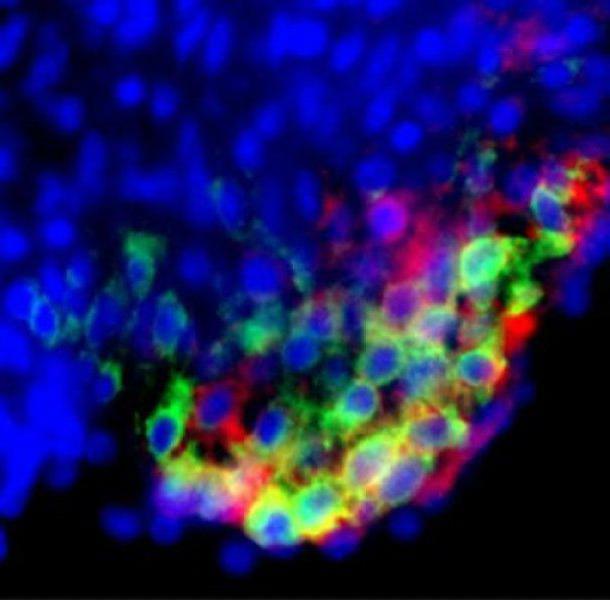
Causes of
The infection described refers to the genus of enteroviruses. Two groups of microorganisms( A and B) are known, each divided into several serotypes. Gastric juice is not able to destroy the pathogenic flora called Coxsackie. The virus in adults causes characteristic symptoms within a couple of days after penetration into the body. The greatest danger of infection persists during the first week of the disease, but the risk of infection exists and a week after the disappearance of the symptoms. The longest virus parasitizes in children and people with weakened immunity.
Distribution of
Infection is transmitted from person to person. The virus is present in the secrets and bodily fluids of patients and can spread by contact with the secretion of the respiratory tract. If the infected person rubs his nose( and the rhinitis is typical for the disease) and touches an object, a virus will remain on the surface of this object and it will turn into a source of infection. It is sufficient for a healthy person to touch an infected thing, and then to the mouth or nose, in order to promote the spread of the disease.
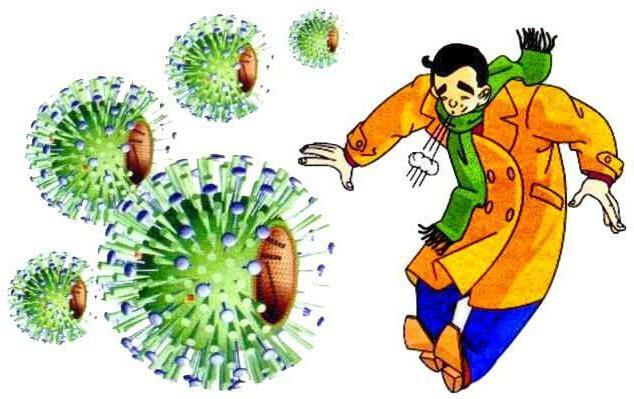
People with an eye infection( conjunctivitis) can infect others by successively touching the eyes and objects. Conjunctivitis develops very quickly and can manifest itself on the first day of infection. Pathogenic microorganisms are present in feces, which is the cause of the spread of infection among children in nurseries, where diapers are used.
Symptoms of
Most often there is an asymptomatic course of infection caused by the causative agent of Coxsackie. The virus in adults can cause a common cold or skin rash( especially in the summer months).Among the relatively common symptoms should also be indicated diarrhea and a sore throat, similar to that seen with acute pharyngitis.
There are more severe manifestations of infection, but they are much less common. These are signs of infection with the virus, such as meningitis( inflammation of the spinal cord or brain), encephalitis( inflammation of the brain), pleuralgia( chest pain) and myopericarditis( inflammation of the heart).The most dangerous symptoms of infection are observed in newborns.
Respiratory Diseases
Coxsackie virus most often causes a febrile infection of the upper respiratory tract with sore throat and runny nose. Some people have a cough that usually occurs with bronchitis. Less often the virus becomes the cause of pneumonia.

Skin rash
Skin rashes can also talk about infection. Most often this is a nonspecific multiple red rash( urticaria) or small accumulations of even red spots. In most cases, the rash appears during the recovery period. Although its appearance, it often resembles a light sunburn, it is not characteristic of peeling.
Small soft blisters, as well as red spots on the palms, soles of the feet and inside the mouth can also be caused by the Coxsackie virus. The virus in adults, however, rarely takes this form;the listed signs are more often observed in children under the age of ten. This is a relatively easy disease that does not require treatment.
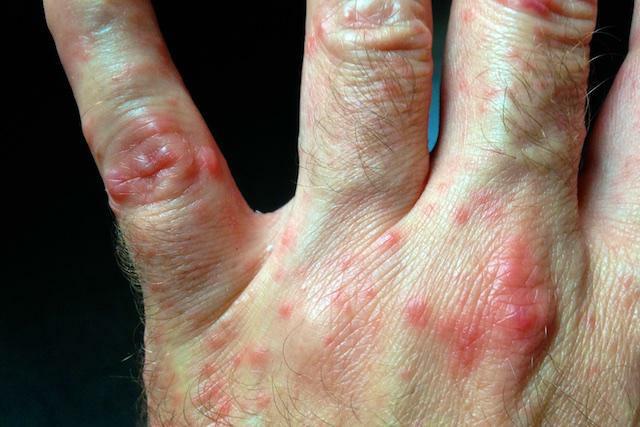
Conjunctivitis( inflammation of the conjunctiva)
Acute hemorrhagic conjunctivitis causes swelling of the eye and hemorrhage in the protein. Usually, the infection affects both organs of vision. Patients with conjunctivitis complain of the sensation of a foreign object in the eye or a burning pain. Symptoms occur within a week.
Meningitis
Viral meningitis - inflammation of the spinal cord or brain - can be caused by some types of infection. The Coxsackie virus in adults can provoke the development of so-called aseptic meningitis, as the cultures of cerebrospinal fluid cells indicate that there is no increase in the number of bacteria( this only occurs because the culture studies contribute to the detection of bacteria, not viruses).Patients with this disease complain of headache and fever, accompanied by stiff neck. There may be a skin rash. Febrile convulsions are more common in children than in adults, but the latter often suffer from a feeling of fatigue lasting for weeks after recovery.
In rare cases, the virus causes both inflammation of the brain( meningoencephalitis).Patients lose a sense of orientation in time and space, can fall into lethargy. A characteristic symptom of this disease is an increase in body temperature.
Weakness and paralysis of
"Coxsackie" is a virus in adults whose symptoms include such rare disorders as weakness in the upper or lower limb and even partial paralysis. These signs are comparable to the symptoms of poliomyelitis, but they do not manifest themselves so intensely. Paralysis or weakness can follow an attack of acute hemorrhagic conjunctivitis or appear as independent signs of infection. Important! This type of enterovirus does not cause permanent paralysis and weakness.
Pleurodinia
Pleurodinia is an inflammation of the muscles in the chest. It is associated with pleuralgia - unexpected attacks of acute pain in the chest, intensifying with deep inspiration. Pain syndrome can also be localized in the abdominal cavity. Feelings take the nature of waves or spasms. Pleurodinia usually passes by itself for about five days, but the seizures may recur after 7-14 days. 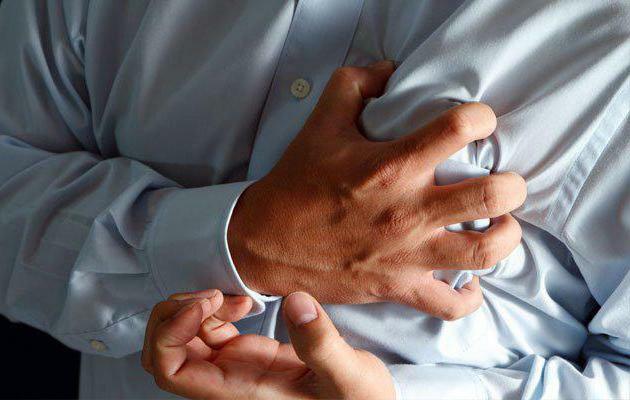
Myopericarditis
Myopericarditis is one of the most dangerous signs of infection with Coxsackie. The virus in adults( the symptoms that are observed most often, listed above), fortunately, extremely rarely causes such disorders. Myopericarditis is an inflammation of the heart and its membranes, and the patient's condition can be either mild or severe. In the latter case, the disease can lead to heart failure, a heart attack or death. Most often, myopercarditis is observed in young patients who lead an active lifestyle. Symptoms include lack of breathing, chest pain, fatigue and swelling of the legs. Damage to the heart can be incurable.
Diagnosis
If a doctor diagnoses a Coxsackie( virus) infection when diagnosing another disease, adult treatment is often not even required, especially if the condition is asymptomatic. If the only sign of it is a cold or skin rash, specialists, as a rule, do not even prescribe diagnostic studies. If a conjunctivitis is found, the doctor will most likely examine the eyes with a manual ophthalmoscope in order to confirm the alleged diagnosis. If the patient has a sore throat, you will need to take a smear for analysis to differentiate acute pharyngitis. 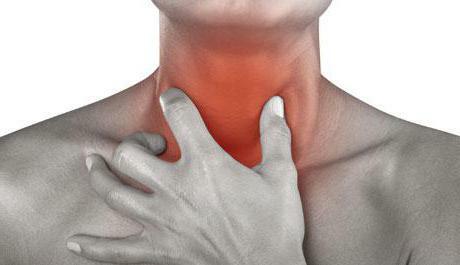
In aseptic meningitis, the physician will take a sample of the cerebrospinal fluid( such as a spinal tap.) In most patients with this disorder, an increase in the number of white cells in the biomaterial is found along with normal sugar levels and a normal or slightly elevated protein level. These changes in the composition of the liquid, although unpleasant, are not as dangerous as the signs of bacterial meningitis. A sample of cerebrospinal fluid is examined for the presence of the causative agent of Coxsackie infection. The virus( treatment in adults in this case is necessarily prescribed by a specialist) can also be detected by a rapid polymerase chain reaction method. This way, 66-90 percent of infections are detected.
Myopericarditis is a dangerous condition and requires diagnosis using an electrocardiogram( ECG) and ultrasound examination of the heart( echocardiogram).The electrocardiogram shows irregularities in the rhythm caused by an increase in the heart, and also helps to identify the inflammatory process. Echocardiogram shows the specific size of the organ and allows you to judge the quality of its functioning. In addition, the results of this study can determine whether there is fluid around the heart. To assess the condition of other internal organs, blood tests are taken.
Treatment of
Although the infection is most common in young children, doctors often diagnose the Coxsackie virus in adults. Symptoms and treatment of the disease in some cases are similar to the symptoms and therapy of infection in children. Unfortunately, at the moment there is no specific drug aimed at the destruction of this pathogenic microflora. On the other hand, the human immune system is almost always capable of independently destroying the Coxsackie virus. Prevention and treatment in adults are important only when it comes to severe damage to the body. Unfortunately, with serious complications, doctors can offer only the elimination of the consequences of infection - the fight directly with the virus is still in the field of experimental medicine. Thus, according to some studies, the condition of patients is improved after intravenous immunoglobulin, produced from human blood serum containing antibodies.

Thus, the symptoms and consequences of infection are treated depending on the specific signs of the disease. Myopericarditis, for example, is accompanied by a worsening of the functioning of the heart, which helps lower blood pressure, which is why in this condition it is necessary to take appropriate medication to normalize the pressure. In urgent cases, heart transplantation is indicated.
Treatment at home
With a slow infection even at home, it is quite possible to cure the Coxsackie virus in adults. Than to treat this disease? To get rid of the pain syndrome and fever, take "Acetaminophen", "Ibuprofen" and similar drugs. You can use any over-the-counter non-prescription drugs if they alleviate the symptoms of colds( decongestants or cough syrup), but they do not bring healing closer and can cause side effects, such as drowsiness or dry mouth.
Prevention

What should I do to not catch the Coxsackie virus? Prevention in adults involves frequent hand washing - this applies to both patients and healthy people. It is not necessary to use special gels containing alcohol - enough ordinary water and soap. When sneezing or coughing, you should close your mouth with your palm, or better with a handkerchief. Diapers with their contents should be carefully folded and discarded as soon as possible. Surfaces( eg furniture) must be kept clean. It is recommended to treat contaminated objects with disinfectants. For this purpose, an ordinary household bleach is suitable - one tablespoon of the substance is diluted in four glasses of water. Coxsackie virus in adults( photos showing signs of pathology, presented on the page) can be easily prevented if the abovementioned preventive measures are observed.
